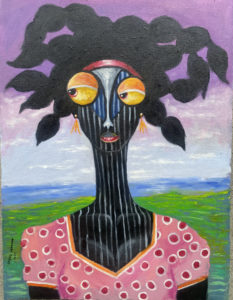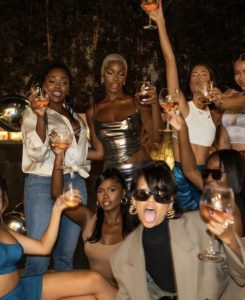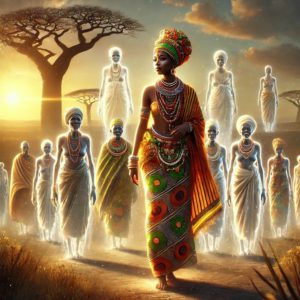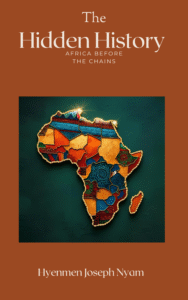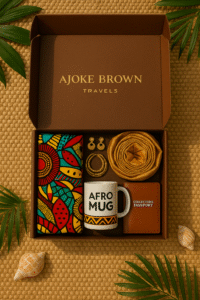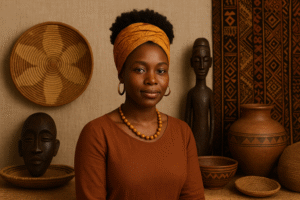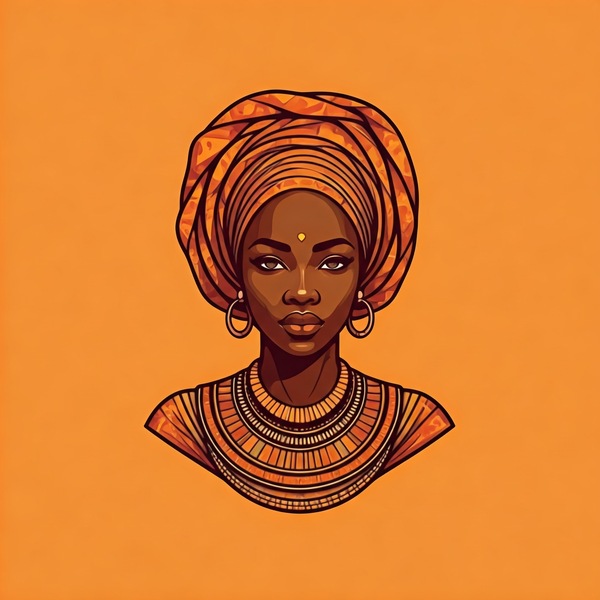Contemporary African Art
Contemporary African art is a vibrant testament to the continent’s dynamic creativity and intellectual prowess.

For too long, the narrative around African art in the West was dominated by “traditional” or “primitive” labels, often confined to ethnographic museums. However, the late 20th and early 21st centuries have witnessed an explosion of creativity and visibility for contemporary African art. This dynamic movement, encompassing artists from across the continent and its diaspora, is characterized by its bold engagement with complex global dialogues, its diverse mediums, and its powerful, evolving narratives that challenge preconceptions and redefine what African art means today.
From “Ethnographic” to “Contemporary”
The journey of contemporary African art to global recognition has involved a deliberate and ongoing effort to dismantle colonial-era categorizations. Historically, art from Africa was rarely viewed through the lens of individual artistic expression or modernity. Instead, it was often collected and exhibited as anthropological artifacts, stripped of authorship and contemporary relevance.
However, a new generation of curators, scholars, collectors, and crucially, the artists themselves, began to reclaim the narrative. Exhibitions like “Magiciens de la Terre” (1989) at the Centre Pompidou in Paris, while controversial, were pivotal in showcasing non-Western contemporary art alongside Western works, albeit still within a problematic framework. More recently, major retrospectives and dedicated African art galleries, museums, and biennales (like the Dakar Biennale, Dak’Art) have firmly established contemporary African art as a vital and independent force on the global stage.
A Reflection of a Complex Continent
Contemporary African artists engage with a rich tapestry of themes, often reflecting the multifaceted realities of their homelands while also participating in universal human experiences.
Identity and Self-Representation: A central theme is the exploration of identity in a post-colonial, globalized world. Artists grapple with what it means to be African today, challenging stereotypes, reclaiming narratives, and celebrating diverse Black identities.
Njideka Akunyili Crosby (Nigeria/USA): Her intricate, layered paintings combine photo transfers, fabric, and paint to create vibrant domestic scenes that explore her hybrid Nigerian-American identity, memory, and personal history.
Zanele Muholi (South Africa): Through powerful photography, Muholi documents the lives of LGBTQIA+ individuals in South Africa, asserting their visibility and challenging prejudice, creating a visual archive of Black queer identity.
Colonial Legacy and Post-Colonial Critique: Many artists confront the enduring impact of colonialism, neo-colonialism, and historical injustices.
El Anatsui (Ghana): His monumental, shimmering tapestries made from discarded bottle caps speak to consumerism, waste, and the history of global trade and cultural exchange, while simultaneously evoking traditional African textiles.
Yinka Shonibare CBE RA (Nigeria/UK): Known for his vibrant, headless mannequins dressed in “Dutch wax print” fabric, Shonibare subverts notions of authenticity, cultural appropriation, and the complex legacies of colonialism and identity.
Globalization, Migration, and Urbanization: As Africa rapidly urbanizes and its people engage more with the global stage, artists address issues of migration, displacement, cross-cultural exchange, and the complexities of modern African cities.
Robin Rhode (South Africa): His street art and performance art often engage with urban spaces and social dynamics, using everyday objects to comment on issues of youth culture, identity, and socio-economic realities.
Spirituality, Tradition, and Modernity: Artists often bridge traditional African spiritual beliefs and practices with contemporary life, exploring how ancient wisdom adapts to a modern context.
Peju Alatise (Nigeria): Her multimedia sculptures and installations often explore Yoruba mythology, spirituality, and gender issues, weaving together traditional narratives with contemporary social commentary.
Environmental Concerns: With Africa disproportionately affected by climate change, a growing number of artists address environmental degradation, sustainability, and humanity’s relationship with nature.
Social Commentary and Activism: Contemporary African art frequently serves as a powerful platform for social commentary, addressing political corruption, human rights, gender inequality, and other pressing societal issues.
Toyin Ojih Odutola (Nigeria/USA): Her large-scale drawings explore socio-economic hierarchies, identity, and the power of portraiture to tell complex stories, often creating fictional narratives that reflect contemporary realities.
Diverse Mediums and Innovative Practices
Contemporary African art is characterized by its embrace of a vast array of mediums, often pushing boundaries and blending traditional techniques with new technologies.
Painting and Sculpture: While traditional forms persist, artists experiment with new styles, abstraction, and materiality.
Photography: A particularly strong and rapidly evolving medium, used for portraiture, social documentary, conceptual art, and exploring identity.
Installation Art: Artists create immersive, site-specific works that engage with space, history, and viewer participation.
Performance Art: Often politically charged and socially engaged, performance art is used to challenge norms and provoke thought.
Video Art and Digital Media: A growing number of artists leverage new technologies to create dynamic and interactive works.
Mixed Media and Assemblage: Artists often incorporate found objects, discarded materials, textiles, and traditional craft elements into their works, creating rich, textured surfaces and layered meanings. This is a powerful way to comment on consumerism, history, and repurposing.
Global Recognition and the Market Boom
The last two decades have seen unprecedented global interest in contemporary African art.
International Biennales and Exhibitions: African artists are increasingly featured in major international art events like the Venice Biennale, Documenta, and contemporary art fairs worldwide.
Dedicated Art Fairs: Events like Art X Lagos (Nigeria), Frieze London’s “Spotlight” section for African artists, and 1-54 Contemporary African Art Fair (London, New York, Marrakech) have become crucial platforms for showcasing and selling African art.
Auction Records: Works by contemporary African artists are consistently fetching record prices at major auction houses, indicating a strong and growing market.
Institutional Acquisitions: Leading global museums are actively acquiring contemporary African art, reflecting a broader shift towards a more inclusive and representative art history.
However, this growth is not without challenges. Issues of market speculation, the need for robust local infrastructure, and ensuring that the financial benefits truly reach the artists and local art scenes remain important considerations.
A Continent’s Creative Resurgence
Contemporary African art is a vibrant testament to the continent’s dynamic creativity and intellectual prowess. It is a powerful force that defies easy categorization, offering fresh perspectives on global issues, challenging historical narratives, and celebrating diverse identities. By engaging with both its rich heritage and the complexities of the modern world, contemporary African artists are not just contributing to the global art dialogue; they are leading it, ensuring that African voices and visions are seen, heard, and deeply felt across the world. Their evolving narratives are shaping not only the future of art but also our understanding of humanity itself.

